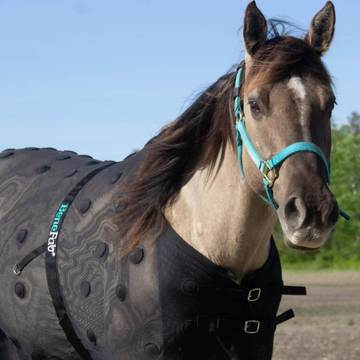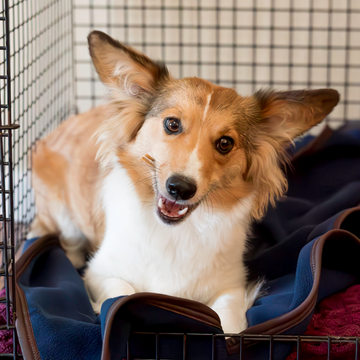
Have you ever wondered what a horse is trying to say to you, or maybe another horse? Horses use their body language and vocalization to communicate with each other and to the people around them. The ability to read and respond to this body language is what sets great trainers apart from the rest. Anyone who spends time around horses can learn to tune in to their unique forms of nonverbal, horse communication.
Reading the Eyes
Paying attention to your horse’s eyes will help you understand how your horses is feeling. Keep in mind a horse’s vision is different from that of a person. Horses have a panoramic view of their environment. Because they are prey animals in the wild, it is important to have a wide view of their surroundings. A large, dark, kind eye is ideal in a horse. This shows that the horse is very relaxed and comfortable. If your horse’s eyes are bright, and wide open, this means that your horse is alert and aware of his surroundings (much like people). Eyes that are only open halfway indicate a sleepy horse. An angry horse will usually have a smaller eye. If you see the skin under the lower lid wrinkle, this horse is extremely angry.
Reading the Ears
The speed of your horse’s ears will tell you a lot of things. If they are moving fast, this usually indicates some form of nervousness, worry, alarm, or panic. If they are moving slowly, this generally means that your horse is more relaxed and at ease with his movement. The position of your horse’s ears is very important as well. When their ears move forward quickly, your horse is alarmed. If your horse’s ears went forward slowly, he/she is confident and happy and could be interested in what is happening around them. If his ears are moving back and forth, your horse is attentive. If your horse pins his ears back and holds there, he is angry or resistant. If one ear is back, then your horse is likely listening to something behind him >>> When you notice this during riding and/or ground work, this is an excellent sign – proving that your horse is listening to you and is attentive on your aids. If your horse’s ears are to the side, that’s means your horse is concentrating, yet relaxed.
Reading the Facial Expressions
Horses can make a variety of facial expressions in response to their environment. Often, changes in a horse’s facial expression accompany other changes in body language.
-
Snapping is seen in foals showing submission to an older horse: they will open their mouths and draw back the corners (as if they are smiling), then open and shut their multiple times.
-
Jaws open with teeth exposed shows aggression or possible attack.
- The Flehmen response is caused by an intense or unusual smell, usually in stallions when they sense a mare in heat. They stick their nose in the air and curl the upper lip over their nose.
-
Flared nostrils usually mean they are excited or alert.
- The horse which is feeling nervous or anxious about something will move along with his mouth tightly closed.
- The relaxed horse will have eased his jaw muscle and will be working the bit quietly with his tongue.
Reading the Skin
To read your horse by their skin, you must be very observant. The skin can be very thin and sensitive or resistant and thick. Horses skin can tell us a lot about their moods and overall personality. Fine and thin skin usually indicates a sensitive horse. Thick and coarse skin usually indicates a horse that is more laid back. You can get a feel for what category your horse falls under by simply rubbing their bodies. This will give you an idea of how sensitive they are to your touch. You may even watch them in the pasture and see how they react to other horses in their herd, flies, and tall grasses.
How can you implement this knowledge?
The key is to watch all parts of the body. Learning the body language of horses can take time. As you work with your horse, observe how his expressions change as he interacts with you as well as other people and horses. Once you truly get to know how horses communicate, you can train yourself to see negative behaviors that might help diagnosing underlying problems.
Benefab® by Sore No-More® has multiple products that can help in a variety of ways from loosening tight polls, decreasing soreness or encouraging overall relaxation. Realizing the significance of the poll area is important to a horse’s well-being – especially those that are being ridden frequently. The poll must be able to flex easily so that the horse can move forward willingly, without pain or resistance. The
Therapeutic Poll Pad is beneficial for this purpose and user-friendly (basically, put it on your halter and/or bridle and forget it’s there! Of course, you’ll remember because the benefits are that good). Our ceramic-infused poll pad emits far-infrared rays that penetrate deep into muscle tissue, stimulating Oxygen atoms in water molecules which increases blood circulation in addition to reducing pain and inflammation. This keeps muscles relaxed as well as promoting safe and natural healing.
The
Rejuvenate SmartScrim is also a very versatile product that helps in many ways. The large-holed, durable ceramic-infused mesh fabric emits far-infrared rays keeping back muscles warm and relaxed. In addition to the therapeutic fabric, it features 80+ medical grade magnets sewn over pre-determined key acupuncture points for a targeted therapy of those areas. Each magnet is enclosed in a soft cushion for enhanced comfort.
Sore No-More® Classic Massage Shampoo cleanses your horses coat without striping their natural oils. With its liniment base, it is a dual-action shampoo, meaning it cleanses while soothing pains and aches, helping reduce discomfort from body aches. Free of sodium lauryl sulfate, this shampoo has no harsh detergents making it safe to use on horses that have dry, sensitive or irritated skin. It is formulated with the finest herbs including Witch Hazel, Arnica, Rosemary, Lavender, Lobelia, Avocado oil, and Coconut oil.
P.S. It’s also safe (and great) to use on dogs!
 Have you ever wondered what a horse is trying to say to you, or maybe another horse? Horses use their body language and vocalization to communicate with each other and to the people around them. The ability to read and respond to this body language is what sets great trainers apart from the rest. Anyone who spends time around horses can learn to tune in to their unique forms of nonverbal, horse communication.
Have you ever wondered what a horse is trying to say to you, or maybe another horse? Horses use their body language and vocalization to communicate with each other and to the people around them. The ability to read and respond to this body language is what sets great trainers apart from the rest. Anyone who spends time around horses can learn to tune in to their unique forms of nonverbal, horse communication.





















